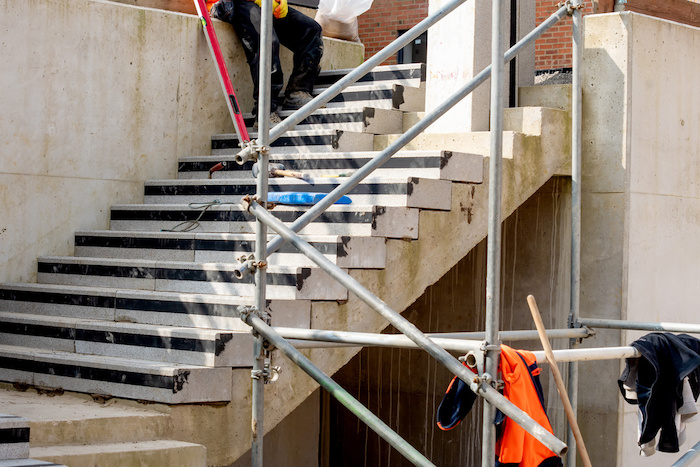
Commercial stairs could carry high volumes of foot traffic daily so they need to be strong enough to withstand trampling. Although concrete seems stark and cold, it may be the perfect material for constructing stairs in commercial buildings.
But before making a decision, builders must weigh the pros and cons of using commercial concrete stairs. Some of these are listed below to help you make the best decision for your property:
Pros
There is no denying that many new commercial projects incorporate concrete structures into their designs. Aside from being a durable material, it could hold the following benefits for commercial spaces:
1. It Saves Time And Money
Pouring concrete could be a costly operation. This is why many commercial property owners prefer pre-cast concrete. It allows them to install the stairs in less time and at a lower cost because the concrete has already been set and cured.
These pre-cast alternatives are available from reputable manufacturers producing commercial concrete stairs. Buying from these companies could save you money on repairs and replacements because they produce high-quality products.
2. It Is Versatile
Concrete is quite versatile because it can be molded into any form. Due to this characteristic, builders are able to design structures of various sizes and styles. On the other hand, materials like steel and wood may be more challenging to bend in a specific way.
3. It Is Safer And Environmentally Friendly
The pre-made concrete stairs pose fewer environmental and health risks to the workers, especially since there is less dust to breathe and almost no danger of structures collapsing caused by inadequate curing.
Furthermore, according to House Grail, using recycled concrete for one ton of new aggregate costs 40% less than making concrete from scratch. Thus, concrete can be recycled when the structure is no longer helpful.
4. It Is Fire Retardant
In contrast to materials like plastic that could melt, wood that could burn and crumble away, or steel that could lose its integrity, concrete is more durable and resistant to fire. For commercial spaces, this would be beneficial when there are masses of people to evacuate during an emergency.
An article by ResearchGate states that concrete has three factors that make it a good fire retardant: it is non-combustible, has a low thermal conductivity, and is non-toxic. All of these features are ideal for commercial buildings that will have many people’s safety to protect.
Even if these reasons could sway contractors on the spot, they should not forget about the cons of using this material as part of the construction process.
Cons
Like other building materials, concrete has some drawbacks that you may want to consider. Choosing concrete for commercial stairs may have the following cons for the building team:
1. Concrete Is Heavy
Moving heavy structures on a construction site requires careful planning and sometimes specialized lifting equipment for assistance. Without proper preparation, work could be significantly delayed, and the project will, in turn, cost more to complete.
2. Repairs Are Problematic
Depending on the size and type of damage the stairs sustained, there could be ways of repairing minor cracks. However, should there be any significant structural issues, the entire staircase may need replacement, especially when it is a pre-cast structure.
3. Little To No Flexibility
Materials like wood and steel could bend and absorb some pressure from heavy objects, whereas concrete won’t have the same benefit. Concrete is relatively rigid and may break, crack, or crumble under too much weight. For this reason, contractors would need reinforcement, like rebar inserted into the concrete during the molding process.
4. Difficult To Attach Railings
Building regulations make it necessary for commercial buildings to adhere to safety guidelines like installing stair railings to prevent fall injuries. Unfortunately, concrete isn’t the most ideal material to drill for the construction fasteners, and its lateral strength is less than that of other building materials. Construction crews may have to employ various methods and techniques to ensure that their concrete stairs adhere to safety regulations.
To Conclude
A simple and convenient way to go from one level of a building to another is by using stairs. Because of this, they must be strong enough to withstand foot traffic, especially in commercial spaces.
Concrete is a solid choice for most contractors because it can be a reliable building material. But after carefully considering both pros and cons mentioned in this article, commercial building contractors can make the right choice for the project they are working on, knowing they made an informed decision.
